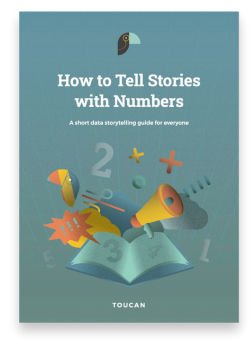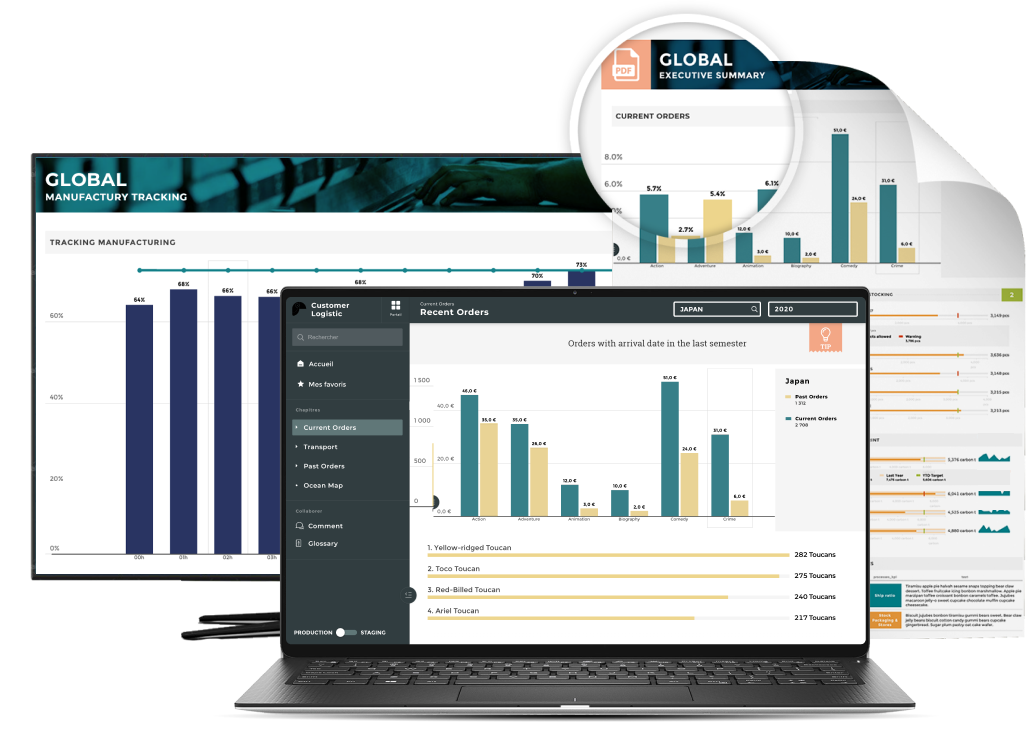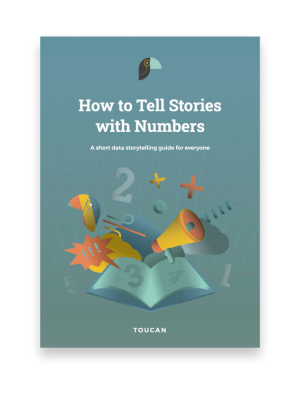Imagine holding a treasure map where X marks the spot of untold riches, but you can't quite make sense of its symbols and landmarks. This is often how customers feel when businesses share data without clarity or purpose.
Brent Dykes, an expert in customer analytics at Adobe, captures this dilemma perfectly: "People just aren't packaging their insights in a good way; either there's too much noise or the managers who are looking at it don't understand the significance of it. It's not fully flushed out. It's not presented in a way that's going to really connect with people. And so we're just basically wasting these nuggets of valuable information because we simply don't know how to communicate it correctly." (Hear more from Brent on ThoughtSpot.) This misstep not only creates confusion but also squanders golden opportunities to engage and enlighten your audience.
Why is it so critical to get data sharing right? The answer is simple: data, when clearly and effectively presented, can transform customer relationships, foster loyalty, and elevate the perceived value of your products and services.
Let’s explore strategies to enhance how you communicate data with your customers, how to clear the noise, focus the message, and turn raw data into compelling stories that resonate with and captivate your audience.
Why data sharing is a game changer
Data sharing isn’t just a technical exercise; it’s a strategic tool that, when leveraged correctly, can deepen the connection between a business and its customers. This connection fosters trust and loyalty, two pillars essential for the sustained success of any company. But why is data sharing such a transformative tool?
Enhancing connection and loyalty
When customers receive data that's relevant to them—whether it’s personalized product recommendations based on their purchase history or insights into service usage—they feel understood and valued. This kind of personalized communication helps customers see that a company is paying attention to their needs and preferences, making them more likely to stick with your brand over others.
Recognizing value and quality
Moreover, sharing data helps customers recognize the value and quality of your offerings. For instance, by sharing performance data, you can transparently show how your products or services are benefiting the customer, which can reinforce their decision to choose your company. This transparency not only satisfies the current generation’s demand for openness but also builds a foundation of trust.
Pitfalls to avoid
However, the road to effective data sharing is fraught with potential pitfalls:
- Overwhelm: Bombarding customers with endless charts, dashboards, and visualizations can lead to information overload. Instead of engaging customers, it turns them away.
- Irrelevance: Sharing data that holds little or no relevance to the recipient's needs or interests fails to capture their attention and can diminish their perception of the brand.
- Lack of narrative: Data needs to tell a story. Without a coherent narrative, data points are just numbers—meaningless and forgettable.
The path forward
To navigate these challenges, businesses must learn to curate data meticulously, ensuring that every piece of information they share is purposeful, precisely targeted, and framed within a clear, compelling narrative. By doing so, they transform raw data into actionable business insights that are not just informative but also engaging.
Harness the power of data sharing
Transforming raw data into valuable insights isn’t just about what information you share—it’s also about how you share it. To truly harness the power of data sharing, consider these key strategies that can help communicate your data in more impactful ways.
Communicate with context
The context in which data is presented can make or break its effectiveness. Always provide customers with the background information they need to understand why the data is relevant. If you’re sharing usage statistics with a customer, explain what the metrics mean in the larger context of their business goals or personal preferences. This helps transform abstract numbers into practical, actionable insights.
Target your message
Not all customers need the same data. Segment your audience and tailor your data presentations to the specific needs and interests of each group. By personalizing data sharing, you ensure that each customer finds the information relevant and useful, which increases the likelihood of engagement and satisfaction.
Use storytelling
Data storytelling is a powerful tool for making your data resonate with customers. Instead of just presenting raw figures, craft a narrative that connects the data points into a coherent story that addresses customer concerns, highlights achievements, or illustrates potential improvements. Storytelling not only makes the data more relatable but also more memorable.
Find a good rhythm
Consistency is key in data sharing. Establish a predictable schedule for when customers can expect to receive updates from you. Whether it’s a weekly performance summary, monthly trend analysis, or quarterly review, a regular cadence keeps customers informed and engaged over time.
Be smart with security
While sharing data, always prioritize security. Ensure that all data shared is protected through encryption, secure channels, and compliance with relevant data protection regulations. Data governance concepts will be essential to ensure that each customer sees their data and only their data.
3 practical ways to share data with your customers
While strategy is crucial, the tools and methods you choose to share data can significantly affect how well your strategies are implemented. Embedded analytics is one such powerful tool that can revolutionize how you interact with your customers. Here’s how you can integrate this and other methods into your data-sharing practices:
1. Integrate embedded analytics into pre-existing applications
Embedded analytics involve integrating advanced analytics capabilities directly into your business applications or customer portals. This allows customers to access real-time, actionable data within the environments they are already familiar with. For example, embedding analytics in a customer relationship management (CRM) system can enable your customers to see personalized data dashboards that reflect their usage patterns or service levels without leaving the application.
Key benefits of embedded analytics include:
- Seamless integration: Analytics features are built into the existing software, providing a cohesive user experience.
- Insights: Customers can access up-to-date data and insights without needing to switch platforms.
- Customizable dashboards: Tailor the analytics interface to match your customers' needs and branding.
- Enhanced user engagement: By embedding analytics, you provide added value, encouraging deeper engagement with your application.
You want to give it a try? Toucan offers embedded analytics to engage your customers with storytelling.
2. Customer Portals
A customer portal is a secure website or application where customers can log in to access data and documents relevant to them. It acts as a self-service hub, enabling customers to perform various tasks independently, without needing to contact support or sales teams directly.
Features of customer portals include:
- Personalized access: Customers can view and interact with data pertinent to their business relationship, such as invoices, order statuses, and service reports.
- Self-Service: Customers can download, upload, and manage their documents.
- Notifications: Automated alerts and notifications about important updates, such as payment due dates, service outages, or new features.
3. Data Visualization Tools
Another way to share data is through interactive dashboards and reports using tools like Toucan, Power BI, or Qlik.
It means you will need to purchase additional licenses for each customer to have access as viewers. If you want to provide them with self-service functionality, they will likely require editor licenses. While you will incur these costs, you can offset them by incorporating this access into a premium analytics package offered to your customers.
These tools can make complex data more accessible and understandable with:
- Interactive dashboards: Users can explore data through interactive charts and graphs.
- Automated reports: Regularly scheduled reports can be generated and sent to customers.
- Custom views: Data can be filtered and customized to meet the specific needs of each customer.
These methods provide flexibility, security, and ease of use, ensuring your customers can access and interact effectively with the data they need.
In conclusion, effectively sharing data with customers can transform relationships, build trust, and enhance loyalty. By personalizing data communication, utilizing storytelling, and maintaining consistency, businesses can turn raw data into engaging, actionable insights. Avoiding pitfalls like information overload and irrelevant data is crucial for success. To explore more strategies and tools for effective data sharing, visit Toucan Toco and discover how you can leverage advanced analytics to engage your customers and drive business growth.






